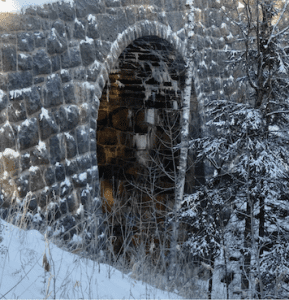 “…The code is more what you’d call ‘guidelines’ than actual rules.”
“…The code is more what you’d call ‘guidelines’ than actual rules.”
– Barbossa comment on the “Pirates Code” in Pirates of the Caribbean
This fall Great Tides Zen will offer the first practice period here in Portland, ME, and for our study focus we’ll dig into Dogen’s “Guidelines for Studying the Way” (Gakudo Yojinshu). This follows the curriculum I’ve been developing for the Vine of Obstacles: Online Support for Zen Training, where the “Guidelines” is the first course I walk through with students (more about that here).
One practitioner with lots of experience in Dogen studies comments, “Fukanzazengi (“Universal Recommendation for Zazen”) is totally in the middle way and I revere it wholeheartedly, not only for its meaning but also for its sound. For example: KON SAN MAZU BOKU RAKU SURO KOTO O. Like a drum. BOM BOM BOMBOM BOMBOM BOMBOM BOMBOM BOMBOM BOM. [“Guidelines”] is not on the same level. You can keep it. To put it in the same category as Fukanzazengi as ‘introductions’ is a kind of insult to Fukanzazengi (emphasis added).“
Well!
Setting aside the issue of its sound, BOM BOM and all, and also, I suppose, the assertion that Fukanzazengi could be insulted by another Dogen text (might make a good cartoon, though), let’s look a little at the issue of the meaning of “Guidelines for Studying the Way.”
First, some background may be in order.
Both “Universal Recommendations” and “Guidelines for Studying the Way” began in the early years of Dogen’s teaching career and there’s evidence that he reworked them as time went on. In the case of the “Guidelines,” Dogen began compiling the sections for the text known now as “Guidelines for Studying the Way” in the early months of 1234, just as a group of practitioners was beginning to grow around him. He completed the ten sections of the text sometime later but we don’t know exactly when because the last four sections bear no date. It is generally assumed that he wrote the whole text in about 1234 but from the quality and tone of the writing in the last three sections, particularly, it seems possible that these might have been written some years later.
In the case of the short “Universal Recommendations,” Dogen continued to edit the text and a few versions of it have survived (see Dogen’s Manuals of Zen Meditation by Bielefeldt). In the case of the “Guidelines,” it seems that Dogen simply added a new section from time to time, a new guideline, providing us with a different kind of perspective into his development as a teacher.
Yokoi and Victoria mention in their introduction to “Guidelines,” “Whereas in [‘Universal Recommendations’] the primary emphasis is on a practical explanation of how to do zazen, in this later work, Dogen gives a more thorough explanation of the spirit in which not only zazen but all of one’s actions are to be done.”
“Guidelines” was published in 1357 by Donki, the sixth abbot of Eiheiji. Shohaku Okumura says, “This was the first printing of a Soto Zen text and shows how much the [“Guidelines”] was appreciated among Dogen Zenji’s disciples.”
Yet, the commentator mentioned above compares Fukanzazengi to “Guidelines for Studying the Way” and finds our text wanting.
And I agree.
I’d go further and say that much the same argument could be made for about 80 or so other pieces by Dogen – Genjokoan, Bussho, Zazenshin to name three – namely, that the quality of the argument and the power of the discourse in “Guidelines for Studying the Way” is rather … well, uneven. For one thing, in most of the 80 texts including the three mentioned, we hear a strikingly modern Dogen voice. There is very little of the medieval voice that we hear strongly in “Guidelines.”
So why use the “Guidelines” as an introduction to Zen study?
Just because it is so humanly uneven and even shows some development in old Dogen’s Zen. It puts us back on our heels, pulls the old boy down off his pedestal, and encourages us to sit up and take notice, enter the text and struggle with it to cull out the gems – and there are many gems, indeed.
Thus, I’ll take an uneven text any day as an introductory source text – something to wrestle with rather than revere. Such a text encourages us to sift and sort the essential dharma from our cultural and/or personal biases. Further, we learn a bit about who the medieval guy Dogen was – and more importantly about who we are now – by what in the text we want to uphold, what we want to push away, and what leaves us cold.
Let me give just a couple quick examples of what I’m talking about and end with a quick note on translation.
First, regarding the issue of how to work with discriminating mind. Throughout much of the early sections of “Guidelines,” Dogen admonishes us to just shut up – to cut off the root of discriminating mind. Suddenly in “Guidelines 10,” what Katagiri Roshi translates (jikige joto) as “Direct Assimilating and Actualizing It,” we’re encouraged to allow consciousness to play freely.
Shut up or play freely – which is it?
On the second issue, how to work with a teacher, Dogen’s guideline is much the same – shut up and do what you’re told. Then again in “Guidelines 10,” there is a softening, an opening, and an encouragement for the student to play freely in the field of dharma. “Do not try to change your body and mind,” says the more mature teacher.
Finally, a point about translations. It’s always a good idea to use more than one, so that we can see the text from different perspectives. Sometimes, though, different translations will find quite different meaning in a passage. Without in-depth knowledge of medieval Japanese, how do we know which one is more accurate?
One particularly knotty problem comes up in “Guidelines 9.” Tanahashi has “Immersed in the way, clearly understand right on the spot.” Okumura has “Being obstructed by the Way, you clarify the Way right here.”
Immersed or obstructed – which is it?
One astute Vine of Obstacles student suggests a resolution – an English phrase that captures both immersed and obstructed – “Caught up in the Way, clarify the Way right here.”
Dharma study then isn’t about being perfect – that goes for the text and ourselves. Instead, we play freely and creatively in the text, like we play freely with earnest vivid sitting, presenting the koan of the moment. Like we play freely and creatively in this very life.
Like Katagiri Roshi said, “We are it so we have to digest it and then we can actualize what we are. It does not come from outside. Jikige joto is direct assimilating and actualizing it.











